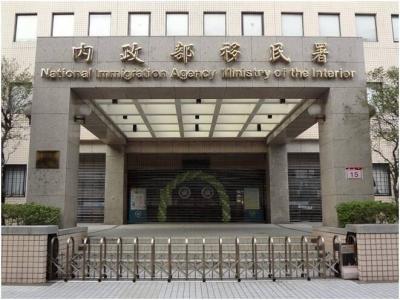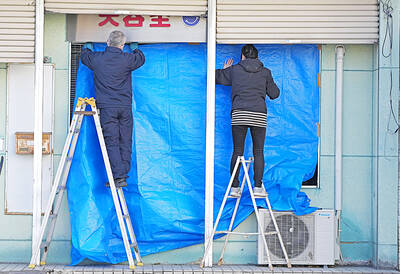The annual Baishatun Matsu pilgrimage, widely recognized as Taiwan's longest religious procession on foot, began in Miaoli County early today, drawing a record-breaking 329,118 registered participants.
The pilgrimage honors the sea goddess Matsu, who is enshrined at Gongtian Temple in Baishatun, a coastal township in Miaoli.
The 10-day journey to Chaotian Temple in Beigang, Yunlin County, spans more than 300km and is notable for its unpredictable route and timing.

Photo: Taipei Times
The two temples are about 120km apart.
The goddess was placed in her palanquin, nicknamed the "pink sports car," at 11:25pm before the procession began at 12:03am today.
President William Lai (賴清德) visited Gongtian Temple yesterday evening to participate in the ceremonial removal of the Matsu statue.
Miaoli County Commissioner Chung Tung-chin (鍾東錦), Taichung Mayor Lu Shiow-yen (盧秀燕), Changhua County Commissioner Wang Hui-mei (王惠美) and Yunlin County Commissioner Chang Li-shan (張麗善) were also in attendance.
"Shanbian Matsu," a counterpart deity from Houlong Township in Miaoli, was also placed on the palanquin at 11:50pm to join the pilgrimage.
Chung said the pilgrimage was designated a national intangible cultural asset in 2010 due to its historical and cultural significance.
Gongtian Temple said that the outbound leg of the pilgrimage to Beigang is expected to take 34 to 37 hours.
Matsu is scheduled to arrive in Beigang at 11am tomorrow, ahead of the holy fire ceremony at Chaotian Temple at 12:40am on Sunday.
In previous years, the return leg of the pilgrimage has been completed in similarly short time frames.
Last year, devotees returned from Yunlin to Miaoli in just 34 hours.
The Ministry of the Interior describes the Baishatun Matsu pilgrimage as Taiwan's longest religious walk in terms of distance and the only one in the country with a route, duration and rest stops that change annually.

A small number of Taiwanese this year lost their citizenship rights after traveling in China and obtaining a one-time Chinese passport to cross the border into Russia, a source said today. The people signed up through Chinese travel agencies for tours of neighboring Russia with companies claiming they could obtain Russian visas and fast-track border clearance, the source said on condition of anonymity. The travelers were actually issued one-time-use Chinese passports, they said. Taiwanese are prohibited from holding a Chinese passport or household registration. If found to have a Chinese ID, they may lose their resident status under Article 9-1

Taiwanese were praised for their composure after a video filmed by Taiwanese tourists capturing the moment a magnitude 7.5 earthquake struck Japan’s Aomori Prefecture went viral on social media. The video shows a hotel room shaking violently amid Monday’s quake, with objects falling to the ground. Two Taiwanese began filming with their mobile phones, while two others held the sides of a TV to prevent it from falling. When the shaking stopped, the pair calmly took down the TV and laid it flat on a tatami mat, the video shows. The video also captured the group talking about the safety of their companions bathing

PROBLEMATIC APP: Citing more than 1,000 fraud cases, the government is taking the app down for a year, but opposition voices are calling it censorship Chinese Nationalist Party (KMT) Chairwoman Cheng Li-wun (鄭麗文) yesterday decried a government plan to suspend access to Chinese social media platform Xiaohongshu (小紅書) for one year as censorship, while the Presidential Office backed the plan. The Ministry of the Interior on Thursday cited security risks and accusations that the Instagram-like app, known as Rednote in English, had figured in more than 1,700 fraud cases since last year. The company, which has about 3 million users in Taiwan, has not yet responded to requests for comment. “Many people online are already asking ‘How to climb over the firewall to access Xiaohongshu,’” Cheng posted on

A classified Pentagon-produced, multiyear assessment — the Overmatch brief — highlighted unreported Chinese capabilities to destroy US military assets and identified US supply chain choke points, painting a disturbing picture of waning US military might, a New York Times editorial published on Monday said. US Secretary of Defense Pete Hegseth’s comments in November last year that “we lose every time” in Pentagon-conducted war games pitting the US against China further highlighted the uncertainty about the US’ capability to intervene in the event of a Chinese invasion of Taiwan. “It shows the Pentagon’s overreliance on expensive, vulnerable weapons as adversaries field cheap, technologically